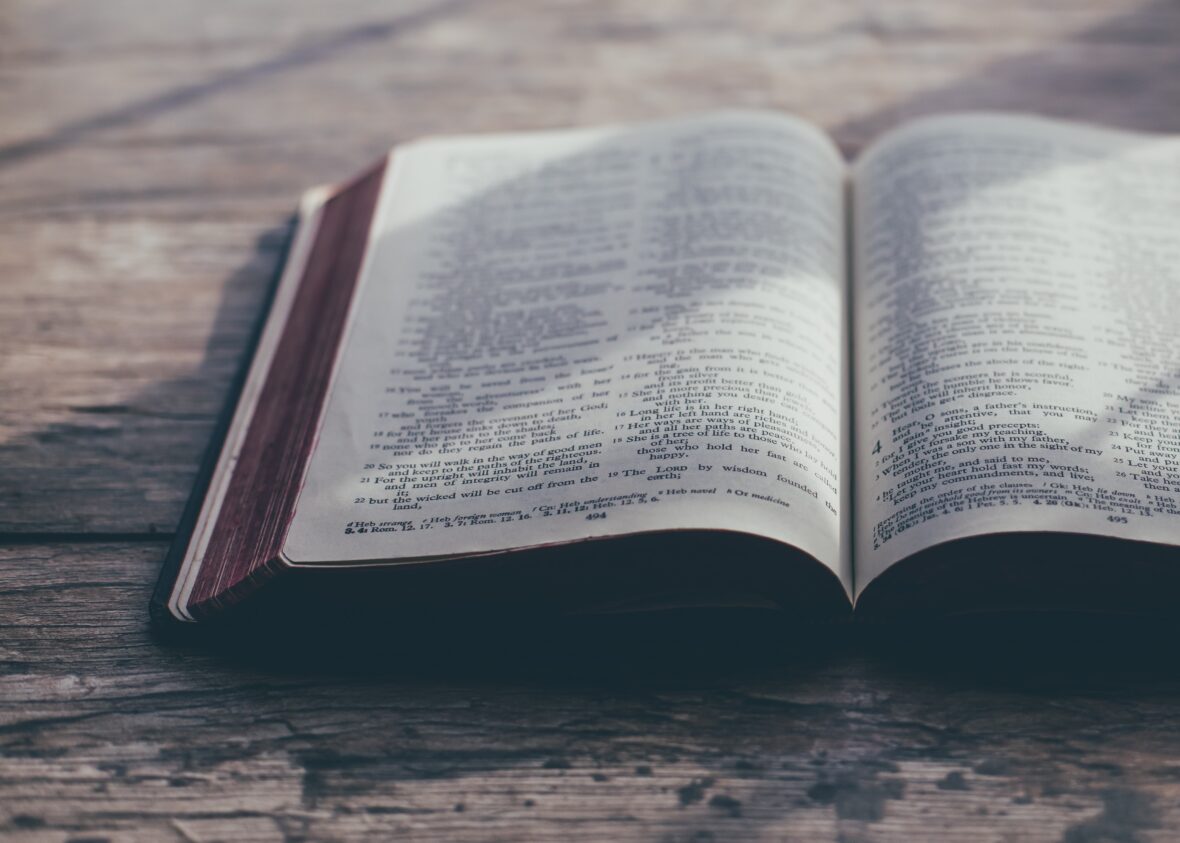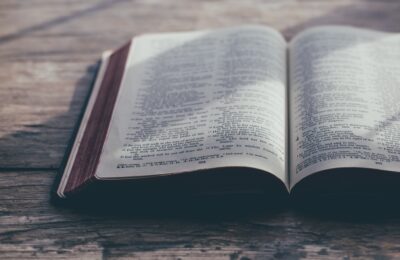The Book of Jeremiah: A Prophet Weeping with God: Judgment, Hope, and the Call to Faithful Endurance
Introduction
The Book of Jeremiah is a sobering call to covenantal realism and resilient faith — revealing God’s tears over judgment, His resolve to purge hypocrisy, and His promise of a New Covenant written not on stone, but on the human heart.
Jeremiah didn’t just preach the Word of the Lord — he lived it, wept it, and wore it like sackcloth. Across five decades of prophetic ministry, he warned Judah that their national collapse wasn’t political misfortune — it was divine consequence. As kings rebelled, priests lied, and prophets flattered, Jeremiah stood nearly alone, embodying faithful endurance in a time of religious decay and cultural compromise.
Yet amid the ruins, hope breaks through: a righteous Branch, a restored people, and a covenant of grace that would one day be sealed by Christ Himself.
This is not merely a book of lament. It’s a manual for courageous obedience in an age of apostasy. It teaches us that even when truth costs everything, God’s promises are worth more.
Bottom line: Jeremiah is a roadmap for living faithfully when the world is falling apart — because the Word of God never does.
1. Title, Author, and Date
Jeremiah, the “weeping prophet,” ministers at the twilight of Judah’s national life, calling God’s people to repent before judgment falls. His voice echoes in the ruins, yet also rises with hope for a new covenant and a future restoration.
Title
- Hebrew: Yirmeyahu — “Yahweh will exalt” or “Yahweh throws (down or establishes)”
- Greek: Hieremias (Ἱερεμίας)
Authorship
- Traditionally attributed to Jeremiah, son of Hilkiah, a priest from Anathoth (Jer. 1:1).
- Dictated much of his prophecy to Baruch, his scribe (Jer. 36:4).
- Internal evidence and stylistic consistency support traditional authorship.
Date & Historical Setting
- Active from 627–586 BC, spanning the reigns of Josiah, Jehoiakim, and Zedekiah (Jer. 1:2–3).
- Ministry concludes with the destruction of Jerusalem by Babylon and includes the aftermath in Egypt.
- Prophesied during the fall of Assyria, the rise of Babylon, and the final collapse of Judah.
Book Stats Sidebar
- Chapters: 52
- Verses: 1,364
- Approx. Word Count: 33,000 (LSB)
- Genre: Prophetic narrative, oracles, laments, historical appendices
Role in Redemptive History
- Jeremiah is God’s mouthpiece during Judah’s terminal rebellion.
- Announces the Old Covenant’s failure under human sin and the promise of a New Covenant (Jer. 31).
- Foreshadows the exile and sets the stage for Daniel, Ezekiel, and the restoration prophets.
2. Purpose and Themes
Jeremiah’s ministry unfolds as a prolonged confrontation with apostasy, false prophets, and unrepentant leaders. His prophetic voice weaves judgment with mercy and reveals God’s covenant faithfulness even in wrath.
Central Purpose: To call Judah to repentance and covenant faithfulness, warning of imminent judgment, while holding forth the promise of a future New Covenant with internal transformation.
Major Themes
- Judgment on Judah’s sin and leadership (idolatry, injustice, false religion)
- Covenant lawsuit motifs (Jer. 2–3)
- The sovereignty of God over nations
- Personal suffering of the prophet
- False prophets vs. true word of the Lord
- Promise of the New Covenant (Jer. 31:31–34)
- Hope beyond exile and divine restoration
Literary Features
- Mixture of poetic oracles and prose narrative
- Use of symbolic actions (e.g., yoke, pottery, loincloth)
- Dialogical laments and divine responses
- Structurally non-chronological; arranged thematically in places
3. Outline (Hierarchical Format)
Jeremiah’s book is both a personal journal and a national indictment. The outline below traces the covenant confrontation, exile prophecy, and future hope across five major sections.
I. Jeremiah’s Call and Commission (Ch. 1)
A. Divine calling before birth
B. Prophetic mission to nations
C. Two visions: almond branch and boiling pot
II. Oracles of Judgment Against Judah (Chs. 2–29)
A. Indictment of Judah’s sin and idolatry (Chs. 2–6)
B. Temple sermon and religious hypocrisy (Chs. 7–10)
C. Covenant lawsuit and prophetic rejection (Chs. 11–20)
1. Jeremiah’s laments and personal suffering
D. Symbolic acts and divine warnings (Chs. 21–24)
E. Judgment against kings and prophets (Chs. 25–29)
III. Book of Consolation: Future Restoration (Chs. 30–33)
A. Restoration of Israel and Judah
B. Promise of the New Covenant (Jer. 31:31–34)
C. Eternal Davidic king and priesthood reaffirmed
IV. Fall of Jerusalem and Aftermath (Chs. 34–45)
A. Warnings to Zedekiah and Jerusalem’s last days
B. Siege and destruction of Jerusalem
C. Jeremiah’s fate and ministry in Egypt
V. Oracles Against the Nations (Chs. 46–51)
A. Judgment on Egypt, Philistia, Moab, Ammon, Edom
B. Babylon’s future destruction
VI. Historical Appendix: Fall of Jerusalem Revisited (Ch. 52)
A. Recap of the Babylonian conquest
B. Fate of Jehoiachin
4. Key Themes and Theological Contributions
Introduction Summary:
Jeremiah unfolds divine justice and deep sorrow in parallel. Its theological weight lies in exposing covenant failure and foreshadowing God’s solution — a new heart, a new law, and a righteous Branch.
Doctrinal Contributions
- The New Covenant (Jer. 31:31–34): internalized law, forgiveness, Spirit empowerment
- God’s patience vs. inevitable judgment
- The prophetic office as suffering servant
- Divine sovereignty over history and nations
Typological and Canonical Links
- Jeremiah as a type of Christ the Suffering Prophet (cf. Matt. 16:14)
- Babylon as a type of end-time judgment
- The New Covenant explicitly cited in Hebrews 8–10
Major Rebellions/Turning Points
- Temple Sermon Rejection (Jer. 7): Judah mocks the Lord’s presence, believing the building shields them from sin.
- Jeremiah’s Scroll Burned (Jer. 36): Jehoiakim defiantly cuts and burns God’s word, symbolizing national apostasy.
- Flight to Egypt (Jer. 43): Judah’s remnant disobeys God’s command, refusing to trust His promise in the land.
Memory Verse: Jeremiah 17:9 (LSB) — “The heart is more deceitful than all else and is desperately sick; who can know it?”
5. Christ in Jeremiah
Jeremiah prefigures Christ through his tears, rejection, and truth-telling under pressure. He reveals the shadow of a greater Prophet who would inaugurate the New Covenant by His own blood.
Messianic and Christological Links
- The Righteous Branch (Jer. 23:5–6) — a coming Davidic King who will reign in justice
- The New Covenant — fulfilled in Christ (Luke 22:20; Heb. 8–10)
- Weeping prophet → Suffering Savior (Matt. 23:37; Luke 19:41–44)
Cross-Reference Chart (OT → NT):
| Jeremiah Passage | Fulfilled/Quoted In | Fulfillment Theme |
|---|---|---|
| Jer. 31:31–34 | Heb. 8:8–12; Luke 22:20 | New Covenant in Christ |
| Jer. 7:11 | Matt. 21:13; Mark 11:17 | Temple cleansing by Jesus |
| Jer. 9:23–24 | 1 Cor. 1:31 | Boasting in the Lord alone |
| Jer. 23:5–6 | Luke 1:32–33; Rev. 19:11–16 | Davidic King, righteous rule of Christ |
6. Historical and Literary Notes
Jeremiah’s setting straddles the last gasps of Judah and the ominous rise of Babylon. His prophetic style blends laments, poetry, historical narrative, and fierce judgment oracles.
Ancient Near Eastern Context
- Echoes of ANE vassal treaty language in covenant warnings
- Symbolic acts mirrored in other prophetic traditions
- Babylonian conquest parallels extra-biblical records (e.g., Nebuchadnezzar Chronicles)
Genre & Structure
- Mixed genres: lament poetry, prose sermons, symbolic actions, letters, legal indictments
- Arranged thematically, not always chronologically
👤 Key Characters Sidebar
- Jeremiah – the weeping prophet; faithful but persecuted
- Baruch – loyal scribe and companion
- Zedekiah – last king of Judah; weak and fearful
- Jehoiakim – rebellious king who burned God’s word
- Nebuchadnezzar – Babylonian king and instrument of God’s judgment
7. Applications for Today
Jeremiah teaches modern believers to trust God when obedience costs everything. His call to proclaim truth, endure suffering, and cling to covenant hope remains as timely as ever.
Discipleship Formation
- Faithfulness despite rejection (Jeremiah never saw outward success)
- Integrity in proclaiming God’s Word when it’s unpopular
- Cultivating inner transformation over external religiosity
Worldview Formation
- National sin has consequences — moral decay invites divine discipline
- Discernment between false comfort and true hope
- God rules the nations; history bends toward His kingdom
Ethical and Missional Guidance
- Beware of religious hypocrisy; obey from the heart
- Call others to return to the Lord with tears and truth
- Embrace God’s call even when it leads through sorrow
8. Shoe Leather Discipleship Tie-In
This book shows us that…
God is not distant when judgment falls. He weeps with His prophet. He warns with fierce mercy. And He promises restoration through a better covenant — one sealed in the blood of Christ. Jeremiah invites us to walk faithfully in the ruins, sowing seeds of hope and obedience even when the world mocks. In a culture of compromise, his voice still cries: Return to Me.
Let the Book of Jeremiah form in you a backbone of conviction, a heart of compassion, and a walk that stays loyal to Christ when the crowd turns away. The New Covenant isn’t just theology — it’s shoe leather. Walk it out.





